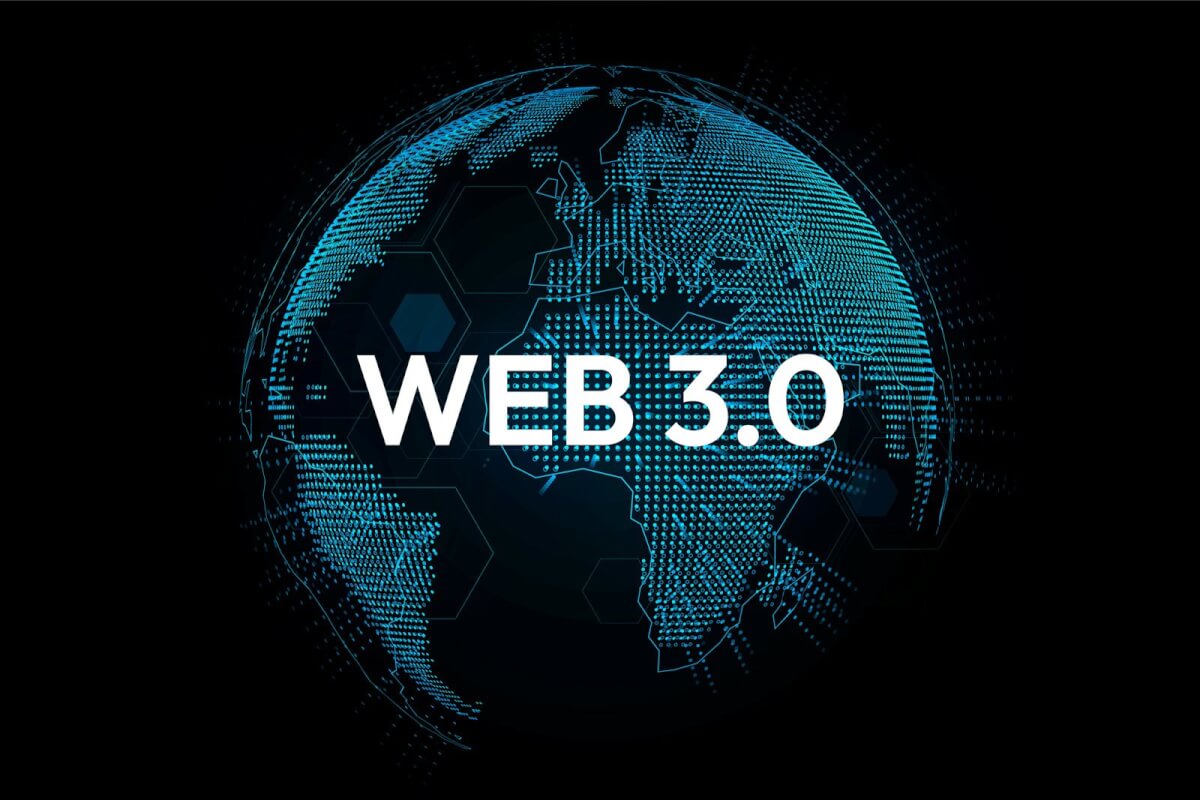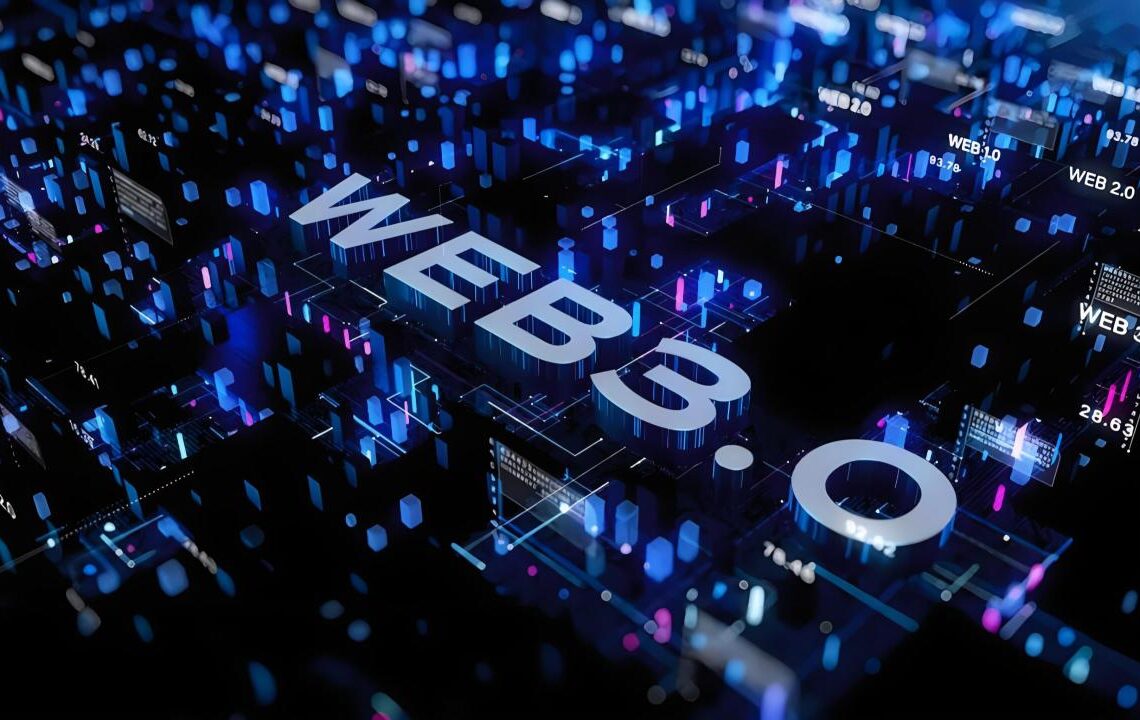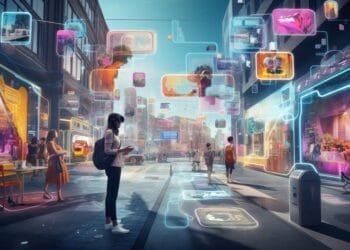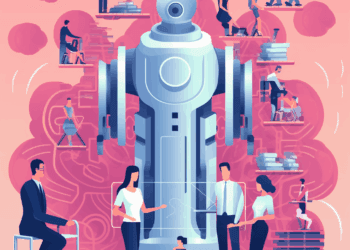The internet, as we know it, is undergoing a profound transformation. From a static collection of web pages (Web1) to a dynamic, interactive, and centralized platform dominated by tech giants (Web2), we are now witnessing the emergence of Web3. This revolutionary iteration promises a decentralized, user-centric, and more equitable digital landscape where individuals reclaim ownership of their data and digital assets. This comprehensive article delves into the core principles of Web3, exploring its foundational technologies, diverse applications across various sectors, the immense potential for Google AdSense and SEO search engine strategies in this new paradigm, and the critical challenges that accompany this groundbreaking shift.
Unpacking the Core of Web3

At its heart, Web3 represents a paradigm shift from a centralized internet, where a few large corporations control data and platforms, to a decentralized one where power is distributed among its users. Think of it as moving from renting digital space to owning a piece of the internet itself. Key characteristics define this evolving digital realm:
- Decentralization: No single entity controls Web3. Instead, it’s built on peer-to-peer networks, primarily utilizing blockchain technology, which distributes data across many computers rather than storing it on central servers. This reduces censorship risk and single points of failure.
- User Ownership: Users own their data and digital assets, not platforms. This is facilitated through Non-Fungible Tokens (NFTs) and self-custodial wallets, giving individuals control over their digital identity and creations.
- Permissionless: Anyone can participate in Web3 without needing permission from a central authority. This fosters innovation and open access.
- Trustless: Interactions on Web3 networks don’t require intermediaries to establish trust. Transactions are verified and secured by cryptographic proofs and network consensus mechanisms.
- Native Payments: Cryptocurrencies are an integral part of Web3, enabling seamless, instant, and borderless transactions without reliance on traditional financial institutions.
A. Foundational Technologies Driving Web3
The realization of Web3 relies on the convergence and maturation of several advanced technologies, each critical to its functionality and potential.
- Blockchain Technology: This is the backbone of Web3. A blockchain is a distributed, immutable ledger that records transactions in a secure and transparent manner. Its key features include:
- Decentralization: No central authority controls the ledger; it’s maintained by a network of computers.
- Immutability: Once a transaction is recorded, it cannot be altered or deleted.
- Transparency: All transactions are publicly visible on the network (though identities can be pseudonymous).
- Smart Contracts: Self-executing contracts with the terms of the agreement directly written into code. These automate processes and enable complex interactions without intermediaries.
- Cryptocurrencies: Digital or virtual currencies secured by cryptography, making them nearly impossible to counterfeit or double-spend. They are the native payment rail for Web3, enabling:
- Peer-to-peer transactions: Direct value transfer between individuals without banks.
- Decentralized finance (DeFi): Financial services like lending, borrowing, and trading built on blockchain.
- Tokenization: Representing real-world assets (like real estate or art) or digital assets (like in-game items) as digital tokens on a blockchain.
- Non-Fungible Tokens (NFTs): Unique digital assets whose ownership is recorded on a blockchain. Unlike cryptocurrencies, each NFT is unique and cannot be replaced by another identical item. NFTs enable:
- Digital ownership: Verifiable proof of ownership for digital art, music, collectibles, virtual land, and more.
- Creator economy: New monetization avenues for artists and creators, allowing them to directly sell their work and earn royalties on secondary sales.
- Identity and reputation: Potential for NFTs to represent aspects of a user’s digital identity or achievements.
- Decentralized Autonomous Organizations (DAOs): Organizations run by code and governed by their members through a voting process, typically using tokens. DAOs offer a new model for:
- Community governance: Empowering communities to make collective decisions about projects, protocols, and investments.
- Transparent operations: All rules and decisions are encoded on the blockchain, providing full transparency.
- Shared ownership: Members often hold tokens that grant voting rights and a share in the organization’s treasury.
- InterPlanetary File System (IPFS): A peer-to-peer hypermedia protocol designed to make the web faster, safer, and more open. IPFS enables decentralized storage, meaning content is not stored on a single server but distributed across many nodes, enhancing censorship resistance and data persistence.
- Zero-Knowledge Proofs (ZKPs): Cryptographic methods that allow one party to prove to another that a statement is true, without revealing any information beyond the validity of the statement itself. ZKPs are crucial for enhancing privacy and scalability in Web3 applications.
- Decentralized Identifiers (DIDs): A new type of identifier that enables verifiable, decentralized digital identity. DIDs give users control over their own identity information, rather than relying on centralized identity providers.
Web3’s Transformative Impact Across Key Industries

The shift to Web3 is not just theoretical; its tangible applications are beginning to reshape various sectors, promising greater efficiency, new business models, and enhanced user experiences.
A. Finance
The financial industry is witnessing a revolutionary shift with Decentralized Finance (DeFi), which aims to recreate traditional financial systems on blockchain, removing intermediaries and increasing accessibility.
- Decentralized Lending and Borrowing: Users can lend their cryptocurrencies to earn interest or borrow funds without going through banks, facilitated by smart contracts that automate collateralization and repayment. This offers greater transparency and often more competitive rates.
- Decentralized Exchanges (DEXs): Platforms that allow users to trade cryptocurrencies directly with each other, without a central custodian. This reduces counterparty risk and gives users more control over their assets.
- Stablecoins: Cryptocurrencies designed to minimize price volatility, often pegged to fiat currencies like the US dollar. They are crucial for facilitating stable transactions and acting as a store of value within the DeFi ecosystem.
- Yield Farming and Staking: Users can earn rewards by providing liquidity to DeFi protocols (yield farming) or by locking up their crypto assets to support network operations (staking), offering new avenues for passive income.
- Tokenization of Real-World Assets: The ability to represent real-world assets like real estate, art, or commodities as digital tokens on a blockchain, enabling fractional ownership, easier transfer, and increased liquidity.
B. Gaming
Web3 is revolutionizing the gaming industry by granting players true ownership of their in-game assets and fostering player-driven economies.
- Play-to-Earn (P2E) Models: Gamers can earn cryptocurrencies or NFTs by playing games, completing quests, or contributing to the game’s ecosystem. These assets can then be traded or sold on secondary markets, creating economic opportunities for players.
- NFTs for In-Game Assets: In-game items like unique weapons, skins, virtual land, and characters are represented as NFTs, giving players verifiable ownership. This means items can be bought, sold, and even transferred between compatible games.
- Decentralized Game Governance: Players can have a say in the development and future of games through DAOs, voting on new features, game mechanics, or treasury allocations. This shifts power from developers to the community.
- Interoperable Game Assets: The long-term vision includes the ability to use in-game assets across different games within the metaverse, enhancing their utility and value for players.
- Creator Economy in Gaming: Players can create and monetize their own in-game content, maps, and experiences, fostering a vibrant ecosystem of user-generated content directly tied to the game’s economy.
C. Social Media
Web3 promises to decentralize social media, giving users control over their data and offering creators new ways to monetize their content without reliance on platform intermediaries.
- User-Owned Profiles and Data: Instead of platforms owning user data, Web3 social media models allow users to own their profiles and control who accesses their information. This empowers users to port their data across different platforms.
- Direct Creator Monetization: Creators can directly monetize their content through NFTs, crypto tips, or subscription models without significant platform fees. This shifts revenue away from large social media companies to the content creators themselves.
- Censorship Resistance: Decentralized social media platforms are harder to censor or shut down, as there’s no central authority to target, promoting free speech and open discourse.
- Community Governance: Social media platforms could be governed by DAOs, allowing communities to set rules, moderate content, and decide on platform features, moving towards more democratic social spaces.
- Web3-Native Identity: Users can leverage their Web3 wallet and associated NFTs as their digital identity across various decentralized applications, creating a unified and user-controlled online persona.
D. Digital Identity
Web3 places a strong emphasis on self-sovereign identity, where individuals have complete control over their digital credentials and how they are used.
- Decentralized Identifiers (DIDs): Users control their own unique identifiers, not a corporation. These DIDs can be linked to verifiable credentials (e.g., educational degrees, professional licenses) issued by trusted entities.
- Verifiable Credentials: Digital proofs of attributes or qualifications that can be cryptographically verified without revealing underlying personal data. For instance, proving you’re over 18 without disclosing your birth date.
- Login with Wallet: Instead of remembering countless usernames and passwords, users can log into Web3 applications using their cryptographic wallet, which acts as their universal digital key and identity.
- Reputation Systems: On-chain activity and verifiable credentials can contribute to a user’s digital reputation, which can be portable across different Web3 applications.
- Enhanced Privacy: Users decide what information to share and with whom, minimizing data exposure and reducing the risk of large-scale data breaches often associated with centralized identity providers.
E. Supply Chain Management
Blockchain, a core component of Web3, is transforming supply chains by providing unprecedented transparency, traceability, and efficiency.
- End-to-End Traceability: Products can be tracked from their origin to the consumer, with every step recorded on an immutable blockchain. This enhances transparency, helps verify authenticity, and combats counterfeiting.
- Smart Contracts for Automation: Automated payments, fulfillment, and quality checks can be triggered by smart contracts when specific conditions are met, streamlining operations and reducing manual errors.
- Enhanced Trust and Transparency: All participants in the supply chain (producers, logistics, retailers, consumers) can view verifiable data, increasing trust and accountability across the network.
- Reduced Fraud and Waste: The immutable nature of blockchain records makes it difficult to commit fraud, and better traceability helps identify bottlenecks and inefficiencies, reducing waste.
- Proof of Authenticity: Consumers can scan QR codes to verify the origin and journey of products, ensuring ethical sourcing, genuine quality, and compliance with regulations.
F. Healthcare
While sensitive, healthcare is exploring Web3 solutions to address data security, interoperability, and patient control over their medical records.
- Secure and Private Medical Records: Patient data can be encrypted and stored on decentralized networks, with patients controlling who has access to their records via DIDs and verifiable credentials.
- Interoperable Health Data: Blockchain can facilitate the secure sharing of medical data between different healthcare providers, researchers, and patients, breaking down data silos and improving continuity of care.
- Patient Data Monetization (Opt-in): Patients could potentially opt-in to share anonymized or pseudonymized medical data with researchers for a fee, provided they give explicit consent and retain ownership.
- Clinical Trial Management: Blockchain can enhance the transparency and integrity of clinical trials, ensuring data immutability and preventing tampering, which can accelerate drug discovery.
- Supply Chain for Pharmaceuticals: Tracking medications from manufacturing to dispensing on a blockchain can combat counterfeit drugs and ensure the authenticity and safety of pharmaceutical products.
Conclusion
Web3 is more than just a technological upgrade; it represents a philosophical shift towards a more open, equitable, and user-centric internet. By leveraging blockchain, cryptocurrencies, NFTs, and DAOs, it promises to dismantle centralized control, empower individuals with true data ownership, and foster unprecedented innovation in a permissionless environment. From revolutionizing finance and gaming to transforming social media and supply chains, Web3’s impact is undeniable and rapidly expanding.
For businesses and content creators, understanding and adapting to this decentralized landscape is not just an opportunity but a necessity. The evolution of advertising models, the new frontiers for SEO search engine strategies in 3D and on-chain environments, and the potential for direct Google AdSense revenue sharing with creators are reshaping the digital monetization playbook.
However, the journey to a truly decentralized and universally accessible Web3 is still in its early stages and presents significant challenges. Addressing technical hurdles like scalability and usability, alongside critical ethical considerations of privacy, regulatory clarity, and digital inclusion, will determine its ultimate success. By fostering collaboration among developers, policymakers, ethicists, and the global community, we can collectively build a Web3 that fulfills its promise of a more democratic, transparent, and user-empowered digital future. The future of the internet is being built now, and it’s powered by Web3.













